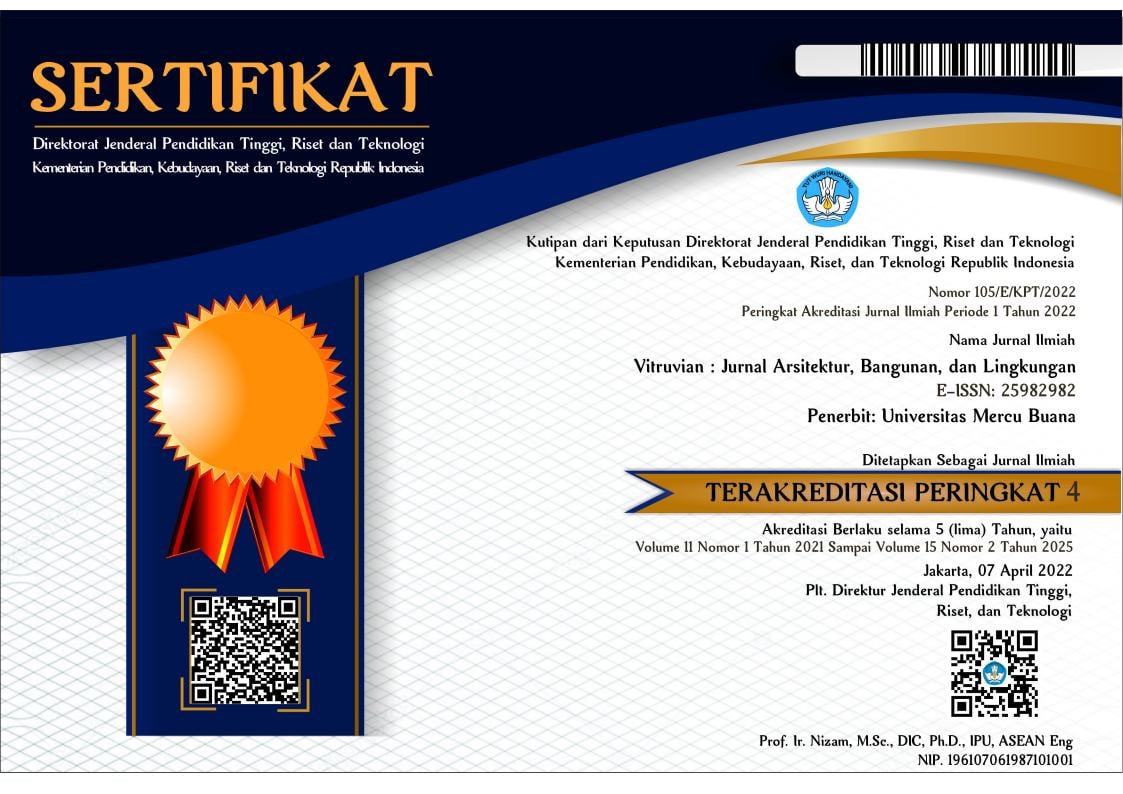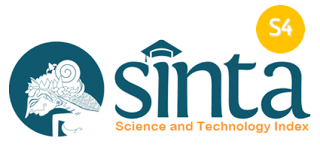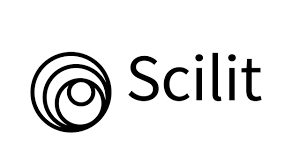ANALYSIS OF SPACE USE AROUND THE MOSQUE AS AN ECONOMIC SPACE IN SYAIKHONA KHOLIL MOSQUE MADURA
Abstract
The mosque is a center of worship for Muslims. Besides a place to pray, researchhas shown that the role of the mosque is not merely in spiritual concern. Mosques also have the role ofeducation, social and economic development. However, the relationship between the role of the mosque and the space use is yet unknown. The activity that creates space use should be analyzed to see whether created space meets the needs or not. This research aims to explore the space use of Syaikhona Kholil mosques in Bangkalan Madura. It has a unique layout with the tomb of the Indonesian ulama inside. Thus, the mosque is always crowded as a pilgrimage destination. The existence of this religious activity eventually led to economic activity to support the needs of the pilgrims, both religious needs and daily needs. Based on a qualitative approach, the primary data was collected through field observation, mapping of economic activities surrounding the mosque, and interviews. The result of the research shows that the activity of social and economic determined thespace used at the Syaikhona Kholil mosque. The economic space that are supporting the enlivenment of the mosque is not only shophouses, kiosks, and paddlers but also a large parking area. The tomb of KH Syaikhona Kholil affects the development of economic activities in the vicinity, changes the space usedaround it, and improves the lives of communities.
Keywords
Full Text:
PDFReferences
Abdel-Hady, Z. M. (2010). The Masjid, Yesterday and Today. Doha: Center for International and Regional Studies at the Georgetown University School of Foreign Service in Qatar.
Bayu, D. (2022, February 16). Sebanyak 86,9% Penduduk Indonesia Beragama Islam. Retrieved from Data Indonesia: https://dataindonesia.id/ragam/detail/sebanyak-869-penduduk-indonesia-beragama-islam
Dalmeri. (2014). Revitalisasi Fungsi Masjid Sebagai Pusat Ekonomi dan Dakwah Multikultural,. Jurnal Walisongo, 321-350.
Erziaty, R. (2015). PEMBERDAYAAN EKONOMI POTENSIAL MASJID SEBAGAI MODEL PENGENTASAN KEMISKINAN. AL-IQTISHADIYAH Jurnal Ekonomi Syariah dan Hukum Ekonomi Syariah, 82-98.
Faridl, M. (1995). Masjid. Bandung: Pustaka.
Groat, L., & Wang, D. (2002). Architectural Research Methods. New York: John Wiley and Sons.
Hamdani, M. I. (2016, December 21). DMI: Masjid Masa Depan Harus Mandiri dan Multi Fungsi . Retrieved from Dewan Masjid Indonesia: https://dmi.or.id/index.php/2016/12/21/dmi-masjid-masa-depan-harus-mandiri-dan-multi-fungsi/
Irham, M. (2018). Filantropi Islam dan Aktivitas Sosial Berbasis Masjid. Jurnal Kajian Sosial Keagamaan Sangkep, 69-90.
Khairuni, N., & Widyanto, A. (2018). Mengatasi Krisis Spiritual Remaja di Banda Aceh Melalui. DAYAH: Journal of Islamic Education, 74-84.
Khoiri, M. (2020). MASJID AL-IKHLAS SEBAGAI PUSAT BUDAYA KEAGAMAAN ISLAM . JUSPI (JURNAL SEJARAH PERADABAN ISLAM), 195-203.
MUI, F. (2013, August 3). Fatwa Majelis Ulama Indonesia Nomor: 34 Tahun 2013 Tentang Pemanfaatan Area Masjid untuk Kegiatan Sosial dan yang Bernilai Ekonomis. Jakarta, Indonesia.
Muslim, A., Karsidi, R., Wijaya, M., & Joebagio, H. (2014). A Mosque-Based Economic Empowerment Model for Urban Poor Community. International Journal of Social Science Research, 80-93.
Ramadhan, A., Hasanah, I., & Hakim, R. (2019). Potret Masjid Sebagai Basis Pemberdayaan. Iqitishodia: Jurnal Ekonomi Syariah, 31-49.
Ridwanullah, A., & Herdiana, D. (2018). Optimalisasi Pemberdayaan Masyarakat berbasis Masjid. Academic Journal for Homiletic Studies, 82-98.
Riwajanti, N. I., Muwidha, M., & Candrawati, T. (2017). MOSQUE AND ECONOMIC DEVELOPMENT. Proceeding The First Annual International Conference on Islam and Civilization (pp. 124-129). Malang: Universitas Muhammadiyah Malang.
Rizki, I., & Zulaikha, S. (2022). THE ROLE OF MOSQUES IN COMMUNITY ECONOMIC RECOVERY DURING . Jurnal Ekonomi dan Bisnis Airlangga, 54-69.
Ruslan, I. (2012). Pemberdayaan Ekonomi Masyarakat Berbasis Masjid di Pontianak. Jurnal Khatulistiwa-Journal of islamic studies, 16-25.
Wulandari, S. (2017). Optimizing fund management of mosque cash for economic empowerment of people. 258-262.
DOI: http://dx.doi.org/10.22441/vitruvian.2023.v12i2.008
Refbacks
- There are currently no refbacks.
Copyright (c) 2023 Vitruvian : Jurnal Arsitektur, Bangunan dan Lingkungan
License URL: https://publikasi.mercubuana.ac.id/index.php/virtuvian/article/view/19030
Layout Jurnal Vitruvian:Download
Declaration & CTA Form Vitruvian:Download
(WAJIB DI UPLOAD SEBAGAI SUPLEMENTARY SAAT SUBMIT ARTIKEL)
Vitruvian
Program Studi Arsitektur
Fakultas Teknik Universitas Mercu Buana
Jl. Raya Meruya Selatan, Kembangan, Jakarta 11650
Tlp./Fax : +62215871335
Surel : [email protected]
p-ISSN : 2088-8201
e-ISSN : 2598-2982
Website : http://publikasi.mercubuana.ac.id/index.php/virtuvian
DOI : 10.22441/vitruvian
Vitruvian is indexed by the following abstracting and indexing services:

This work is licensed under a Creative Commons Attribution-NonCommercial 4.0 International License.








